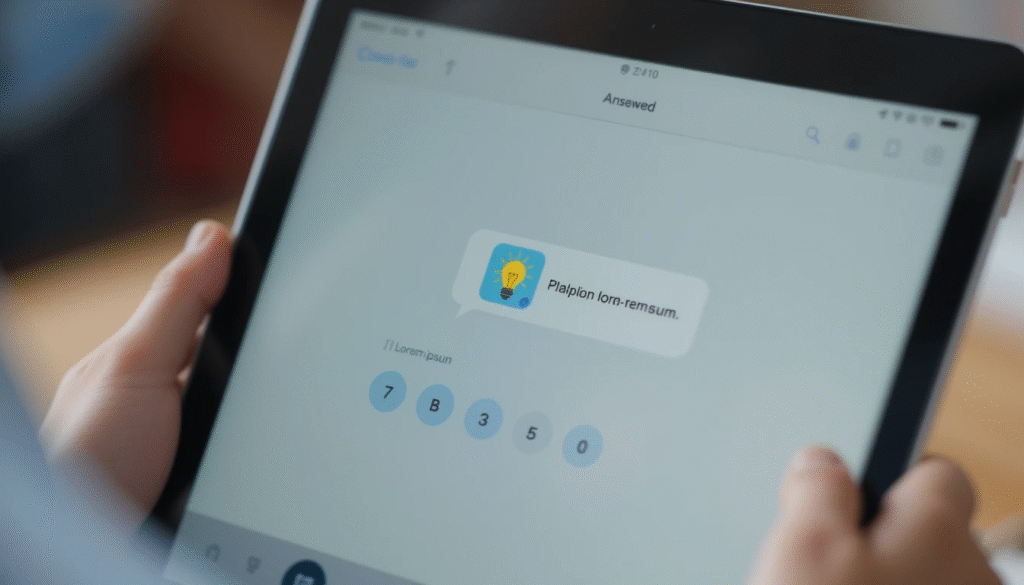How to Use AI Agents in LMS for True Personalized Learning Ultimate Guide With 2 Usecases

For decades, the promise of truly personalized learning has felt just out of reach for many educators. The challenge of catering to the unique pace and style of thirty different students in one classroom is immense. But what if every student could have a smart, digital assistant working alongside them within your school’s Learning Management System (LMS)? This is the reality made possible by integrating AI Agents in LMS platforms, and it’s a technology that is fundamentally reshaping education.

This isn’t just about adding another fancy chatbot. It’s about embedding intelligent, autonomous systems directly into the learning environment to create dynamic, responsive, and deeply personalized educational experiences. By understanding how to properly leverage AI Agents in LMS systems, educators can move away from a one-size-fits-all model and finally deliver the one-to-one support that every student deserves.
This guide will break down exactly what these AI agents are, explore their game-changing use cases, and provide a practical roadmap for implementing them in your own LMS to foster true personalized learning.
What Exactly Are AI Agents in the Context of an LMS?
Before diving into the “how,” let’s clarify the “what.” In simple terms, think of an AI Agent in an LMS as a smart, automated teaching assistant that lives inside your learning platform (like Canvas, Moodle, or Blackboard). Unlike a simple chatbot that follows pre-programmed rules, an AI agent is autonomous. It can perceive its environment (student actions, quiz results, content engagement), process that information, and make decisions to achieve a specific goal, such as improving a student’s understanding.

These agents use machine learning and data analytics to understand each student’s unique behavior. They see which videos a student re-watches, what quiz questions they get wrong, and what topics they master quickly. This allows the integration of AI Agents in LMS to provide support that feels personal and is incredibly effective.
The Core Benefits: Why Integrate AI Agents in LMS?
Integrating AI agents isn’t just a technical upgrade; it’s a pedagogical revolution. The benefits directly address some of the biggest challenges in modern education.
- Hyper-Personalization at Scale: AI agents can create a unique learning journey for every single student simultaneously, something impossible for a human teacher to do alone.
- Increased Teacher Efficiency: By automating tasks like grading simple quizzes and answering common questions, these agents free up valuable teacher time to focus on high-impact activities like mentoring and complex instruction.
- Data-Driven Insights: AI Agents in LMS platforms provide educators with powerful analytics on student performance, highlighting at-risk students and revealing which parts of the curriculum are most challenging.
Use Case 1: Creating Truly Adaptive Learning Paths
The most powerful application of AI Agents in LMS is the creation of adaptive learning paths. In a traditional LMS, every student follows the same linear path through the course material. With an AI agent, the journey becomes dynamic.
Here’s how it works: A student takes a pre-assessment quiz. The AI agent analyzes the results and identifies that the student is weak in “Topic A” but has mastered “Topic B.” Instead of forcing them through Topic B again, the agent automatically provides them with supplementary resources for Topic A—like a video, an article, or a practice worksheet. Once the student demonstrates mastery, the agent moves them forward. This ensures students spend their time exactly where they need it most.
Use Case 2: Providing Instant and Automated Feedback
Timely feedback is essential for learning, but it’s a huge bottleneck for teachers. AI Agents in LMS can provide instant, personalized feedback on a wide range of assignments. For multiple-choice quizzes or fill-in-the-blank questions, this is simple. But modern AI can now provide constructive feedback on short written answers and even code.

For example, an AI agent can be programmed to check for specific keywords, logical structure, or common grammatical errors in a paragraph-long response. While it won’t replace a teacher’s nuanced feedback on a full essay, it provides an invaluable first layer of review, helping students correct mistakes in real-time instead of waiting days for a grade.
The “Before vs. After” of an AI-Powered LMS
The impact of integrating AI Agents in LMS is best understood through a direct comparison. Here’s a simple table highlighting the transformation:
| Feature | Traditional LMS | LMS with AI Agent |
|---|---|---|
| Learning Path | Linear and the same for all students. | Dynamic and adaptive to each student’s pace. |
| Feedback | Delayed, provided manually by the teacher. | Instant, automated, and available 24/7. |
| Student Support | Limited to teacher’s office hours or forums. | On-demand support via an intelligent chatbot. |
| Data Insights | Basic completion rates and quiz scores. | Deep analytics on engagement and learning gaps. |
How to Implement AI Agents in Your LMS: A Practical Approach
Integrating AI Agents in LMS platforms might sound technically daunting, but it often involves leveraging tools that are designed for educators. Here’s a simplified three-step approach:
- Identify Your Goal and Choose the Right Tool: First, decide what you want to achieve. Do you want to create adaptive quizzes? Provide chatbot support? Many third-party educational tools now offer AI features that are specifically designed to integrate with major LMS platforms.
- Utilize LMS Integrations (APIs): Most modern LMSs (like Canvas, Blackboard) have a system of “integrations” or APIs that allow them to connect with these third-party AI tools. Often, this is as simple as your school’s IT administrator “plugging in” the new tool.
- Start Small and Train Your Users: Don’t try to roll out every feature at once. Start with a single use case, like an AI-powered quiz tool. Train a small group of teachers on how to use it, gather feedback, and then expand the rollout. Proper training is key to the successful adoption of AI Agents in an LMS.
Key Challenges and Ethical Considerations
While the benefits are immense, it’s crucial to be aware of the challenges. The responsible use of AI Agents in LMS requires careful consideration of:
- Data Privacy: How is student data being used, stored, and protected? Ensure any AI tool complies with privacy regulations like FERPA.
- Algorithmic Bias: AI models are trained on data, and if that data is biased, the AI’s recommendations can be too. It’s essential to monitor the AI’s performance to ensure it is equitable for all students.
- The Human Element: An AI agent should augment, not replace, the teacher. The goal is to free up teachers for the uniquely human aspects of education: mentorship, inspiration, and emotional support.
Conclusion
The integration of AI Agents in LMS platforms represents a monumental leap towards achieving the long-held goal of personalized education. By acting as intelligent tutors, creating adaptive learning paths, and providing instant feedback, these tools empower both students and educators. While implementation requires careful planning and ethical oversight, the potential to create more effective, efficient, and engaging learning environments is undeniable. The future of learning is here, and it’s powered by a smart partnership between human teachers and their new AI assistants.
Frequently Asked Questions
What is the main function of an AI Agent in an LMS?
Its main function is to personalize the learning experience by analyzing a student’s performance and automatically providing tailored content, feedback, and support.
Can AI agents replace human teachers?
No, they are designed to be powerful assistants. They handle automated tasks to free up teachers to focus on complex instruction, mentorship, and human connection.
What is an “adaptive learning path”?
It’s a personalized learning journey where the AI agent adjusts the sequence and type of content for each student based on their real-time performance and needs.
Is it difficult to integrate AI Agents into an LMS like Canvas or Moodle?
For educators, it’s often as simple as using an approved third-party tool. The technical integration is typically handled by the school’s IT department via APIs.
How do AI agents provide feedback on assignments?
They can instantly grade objective questions (like MCQs) and are increasingly able to provide structured feedback on short written answers based on pre-set criteria.
Are there privacy concerns with using AI Agents in an LMS?
Yes, data privacy is a primary concern. Educational institutions must ensure any AI tool they use is fully compliant with student data protection laws like FERPA.
Can these AI agents help identify students who are falling behind?
Absolutely. They analyze engagement and performance data to flag at-risk students early, allowing teachers to intervene before problems become significant.
What is the difference between an AI agent and a simple chatbot?
A chatbot typically follows a set script. An AI agent is more autonomous; it can analyze new situations and make independent decisions to achieve its programmed goals.



